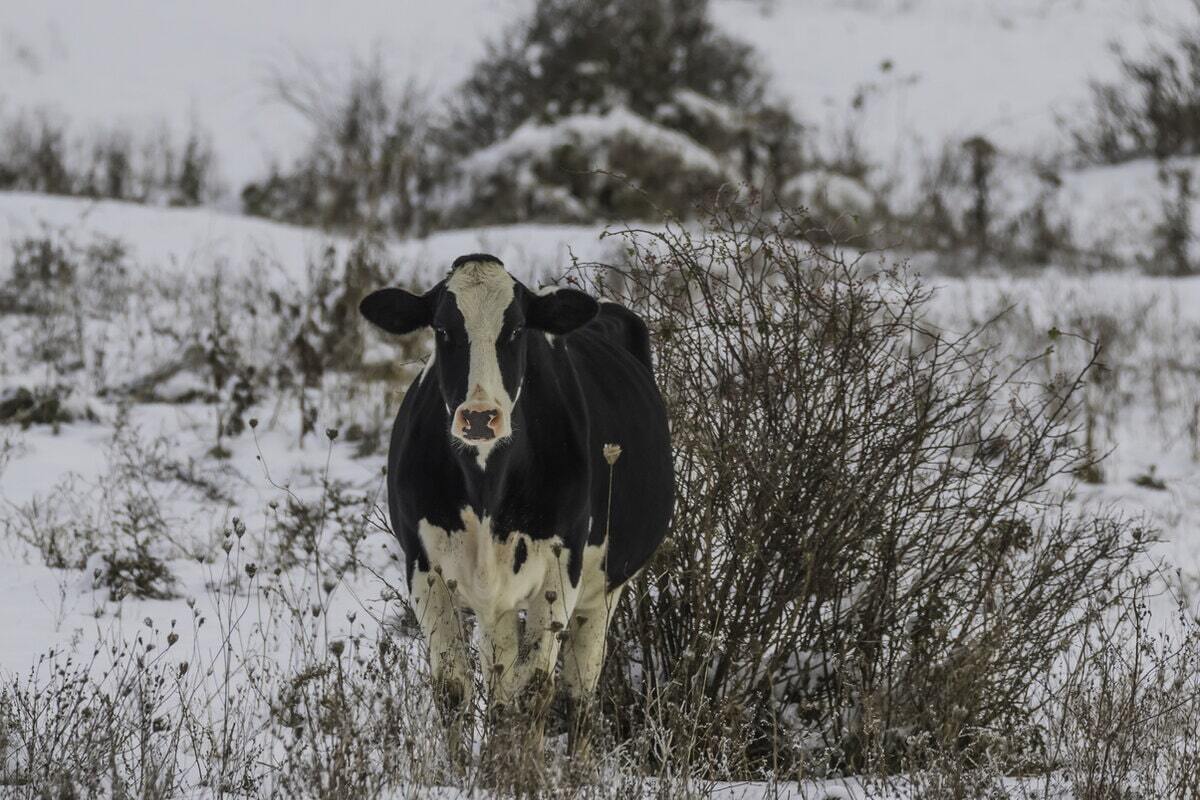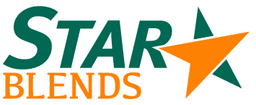While cows can grow a thick winter coat to insulate against the cold, it’s essential to provide adequate winter care for dairy cattle. If shelter, bedding, and feeding suffer due to cold temperatures, your cows won’t be happy, and they will produce less milk and become increasingly susceptible to diseases.
Do cattle need shelter in winter? Does the feed quality impact dairy production in cold weather? Read on to discover the answers to these common winter cattle care questions and tips on enhancing the success and production of your dairy farm.
How To Keep Cattle Warm In Winter
Before discussing feeding cattle in winter, let’s examine what makes a suitable living area for dairy cattle during the cold season. It’s crucial for your barn and other places where cows spend a significant amount of time to be warm, comfortable, and draft-free.
Warm Bedding
Dairy cows are highly motivated to lie down for 10-12 hours daily. Lying down is a critical behavior for cows. Some cows would even rather lie than eat or perform social activities.
If their bedding is too cold or wet during the winter, cows will hesitate to lie down, which could negatively impact their health and milk production. Cows that stand for too long can develop hypoxia and ischemia due to pressure inside their claws, which increases the risk of lameness.
In addition, lying cows are more likely to ruminate and have higher milk production. Inadequate bedding or insufficient space can cause competition between cows and social conflicts. As a result, cows may become stressed, leading to various diseases.
Deep straw is one of the best bedding options for dairy cows, especially for calves. It’s critical to use warm bedding like straw after the calving season to protect calves from winter weather. On top of warm bedding, calves may also need calf jackets to maintain adequate body temperature and prevent cold stress.
Winter Cattle Shelter
Dairy cows not only spend energy to maintain body heat in winter but also to produce milk. So, if they don’t have adequate shelter during the coldest days, they won’t have enough energy and nutrients for milk production. In addition, cows exposed to extreme cold will consume up to 30% more food, increasing your long-term feed cost.
So, if you have ever wondered: how do cattle survive winter in Montana and similar US states where winters are harsh, the answer is shelter and additional feed. While cows don’t always need shelter in winter, they must have barn access during the coldest days, especially when their hair gets wet.
Preventing Drafts
Wind can make cold weather significantly worse for cows. The stronger the wind, the more effect the cold will have on your cattle. That’s why it’s vital to use curtains to cut down drafts in a barn and patch up any holes around windows, doors, and curtain ends. Outside windbreaks can be made from portable panels, round bales, and pastures with shelterbelts.
Feeding Cattle In Winter
High-quality feed for dairy cattle is crucial during the cold season. The best feed for cattle in winter often contains grains like wheat, barley, rye, and maize on top of hay, forage, and silage. Grains contain more calories and proteins, which helps cows meet their energy needs and produce milk. If your cows don’t consume more feed to offset energy loss from cold weather, they can lose body fat, making them even more susceptible to cold stress. As a result, they will need even more feed to stay warm and prevent additional weight loss.
Rationing feed and developing a feeding strategy is subjective to your particular dairy herd and its living conditions. Star Blends can work with your nutritionist to develop a specialized feed for your dairy cows for maximum cow performance, health, and well-being. We can provide feed exactly to your dairy nutritionist’s design. So, your cows can get optimal nutrients depending on their body condition, health status, and type (lactating cows, dry cows, heifers, or calves).
Nutrition plays a crucial role in your dairy cattle performance during the winter. We highly recommend working with a dairy nutritionist to determine which exact cereals, fiber, protein sources, and minerals your cattle need. Maximizing the feed potential can help you produce more milk and healthier calves while improving the body condition, health, and longevity of your entire dairy herd.
Besides feedstuffs, dairy cattle need lots of water. If cows don’t drink enough water, they won’t eat. During the summer, cows happily drink plenty of water. However, the water can get too cold for them in winter. As a result, cows can reduce water intake and, subsequently, feed intake, which means less milk and an unhappy herd. Thankfully, heaters can be used on pipes to prevent freezing or in water sources to maintain an ideal temperature range of 40°F to 65°F. Dairy cattle require about 4.5 to 5 pounds of water per pound of produced milk. If temperature or frozen pipes limit water access, milk production will suffer.
Custom-Made High-Quality Nutrition For Your Dairy Cows
Your cows need additional energy to get through the winter. Thankfully, Star Blends can help. We are here to work with you and your nutritionist to create a custom cattle feed that will provide the right amounts of nutrients and quantity of feed your cattle need to come out of winter better than ever. Contact us today to get started.



